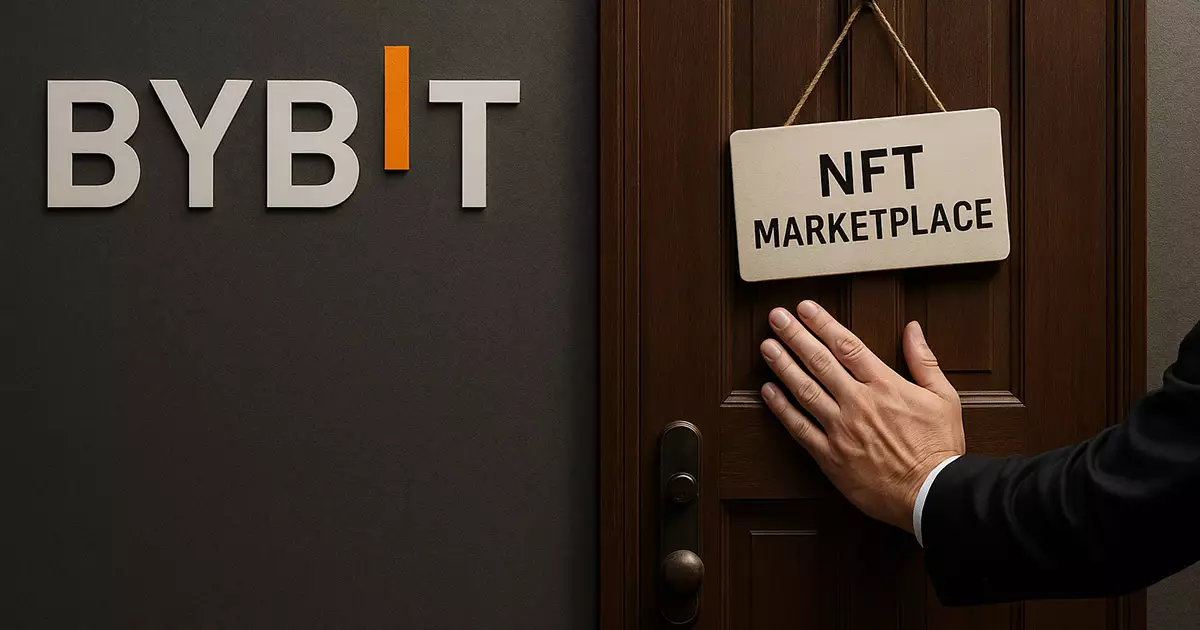Bybit’s recent announcement to shutter its NFT Marketplace highlights a grim reality for the digital collectibles sector: a decline that many might view as a catastrophic end to a once-hyped phenomenon. The motivations behind Bybit’s decision stem from a stark reduction in demand, which has been evident for quite some time. While the NFT market showcased unfathomable growth in 2021, painting a picture of an exciting future for digital ownership, the subsequent two years have painted a much darker canvas. A sobering 63% year-over-year decrease in NFT sales during the first quarter of 2023 signals a sector gasping for air, struggling to find its footing amidst what can only be described as a brutal correction.
The Institutional Exodus
Bybit isn’t operating in isolation; they are only the latest in a growing chorus of platforms reassessing their involvement in NFTs. Kraken, once a major player in this digital space, has also quietly exited the NFT game, following LG Electronics’ discontinuation of its NFT platform, LG Art Lab. This reflects a concerning trend associated with dwindling institutional confidence. If heavyweights in the tech and finance sectors are pulling back, one has to question the sustainability of marketplaces heavily reliant on speculative investments. This exodus has turned the once-booming NFT landscape into something resembling a ghost town, creating an unsettling atmosphere wherein collections that were once all the rage have lost their luster.
Market Anomalies: The Surviving Outliers
However, it’s essential to recognize that even amid this downturn, a few outliers continue to thrive. Projects like Pudgy Penguins and Doodles have shown resilience, managing to capture attention and sales even as the waters around them appear troubled. The recent partnership between Doodles and McDonald’s demonstrates that integrated marketing can still spur interest in niche collections. But herein lies an uncomfortable paradox: while a handful of collections may still perform well, the broader NFT market showcases a pervasive atmosphere of uncertainty and decline, which could spell doom for many small players.
Security Concerns: A Growing Shadow
To complicate matters further, the shadow of security issues looms large over exchanges like Bybit. The recent $1.4 billion theft attributed to North Korean hackers reveals vulnerabilities that have simmered beneath the surface of the crypto world. The fear of losing assets in an unstable realm often deters both casual and institutional investors, leading to a pulling back of engagement and investment. Bybit’s retreat is not merely a response to declining sales; it’s a necessary revaluation of risk exposure in a context where hackers seem to have unfettered access to massive quantities of crypto assets.
The Future of Digital Ownership
In reflecting on Bybit’s closure of its NFT Marketplace, it’s increasingly difficult to argue that NFTs represent an inevitable future for digital ownership. The perception of NFTs as a novel frontier—and an essential component of digital culture—is fading as rapidly as it blossomed. The overarching sentiment feels akin to a cruel awakening from a vivid dream, where the promise of a technological revolution has been replaced with stark reality. For those of us holding on to the potential of NFTs, it’s a trust that is perilously close to being broken, ushering in uncertainty for creators, collectors, and investors alike.

